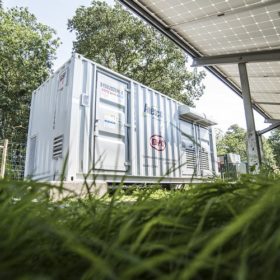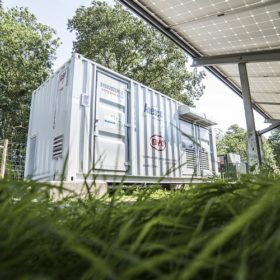IESA proposes a policy framework for energy storage in Electricity Act

Defining energy storage under the Electricity Act could help start ancillary services and frequency regulation through energy storage as a flexible asset. It will also help to enable electric vehicle charging infrastructure, vehicle-to-grid (V2G) concepts and microgrids integration with expanded grid connectivity in the long run, according to the industry body.
The Draft Electricity (Amendment) Bill, 2020 by India’s Ministry of Power seeks to address a series of challenges facing the sector. It provides a host of measures including improved regulatory discipline, private sector participation, next-generation reforms, the financial health of Discoms and thrust on the renewable energy sector.
However, several current issues and technologies developments in recent years are majorly missing from the amendment, according to the India Energy Storage Alliance (IESA), which has sent its recommendations on the proposed bill to the Ministry of Power.
IESA executive director Debi Prasad Dash said, “We have proposed the ministry to have a clear policy framework regarding energy storage in the Act. India has emerged as one of the fastest-growing markets for renewable energy, and energy storage technologies could be the key enabler for RE integration and grid stability.”
“Defining energy storage under the Electricity Act could help start ancillary services and frequency regulation through energy storage as a flexible asset. It will also help to enable electric vehicle charging infrastructure, vehicle-to-grid (V2G) concepts and microgrids integration with expanded grid connectivity in the long run. We hope the ministry will consider IESA’s recommendations to make the Indian electricity grid more resilient and reliable.”
The IESA recommendations include:
- Defining Energy Storage. IESA has recommended defining energy storage appropriately in the Electricity Act. The definition should factor in flexible nature and applications, and its categorization as a generation, transmission and/or distribution asset.
- Mentioning National Energy Storage Mission/Policy in the Act. The policy for the energy storage sector has evolved over the past few years in India. There is expected to be significant performance improvement in energy storage technologies and cost reduction over the next decade.
The Ministry of New and Renewable Energy (MNRE) is releasing multiple tenders that include storage and the National Mission on Transformative Mobility, and Battery Storage looks to set up 50 GWh advanced energy storage manufacturing capacity. So, it is highly recommended to include direction from the Electricity Act to frame the policy framework required for adopting storage technologies in suitable areas.
- Storage Purchase Obligation. Instead of a Hydro Purchase Obligation, which includes a significant environment and operational limitation, Storage Purchase Obligation (SPO) should be advocated. SPO can comprise various existing and emerging cost-effective solutions that provide appropriate flexibility. Discoms should be free to choose a specific form of procurement, either hybrid renewable + storage or renewable and storage independently.
- Power Quality. It should be the duty of every supply licensee to ensure power quality (covering voltage, harmonics, frequency, surges, etc) as per the norms prescribed by the relevant authority. The licensee shall be allowed to offer different qualities at different price points subject to regulatory approval and meet a minimum power quality as mandated.
Power quality might require the creation of new services and markets such as ancillary services, and these need to be enabled by the relevant authorities within two years, according to IESA.
- Control of transmission and use of electricity. IESA has recommended automatic exemptions for allowed microgrids, renewable generation, back-up power, energy storage, electric vehicles, as well as other permitted uses as added to this list from time to time (by the Central or State Electricity Regulatory Commissions).
- Smart Grids. Building upon the National Smart Grid Roadmap released by the Ministry of Power, all states shall produce roadmaps to enable consumer production participation, renewable energy integration (subsidies, feed-in-tariffs or generation-based incentives), future grid connectivity with micro-grids, EV adoption (through V2G and charging infrastructure integration with utilities) and differentiated supply (by incorporating time of use, guaranteed supply, power quality, demand response or dynamic load management).
- Allow aggregation of open access electricity and access to renewable energy. Section 42 of the Electricity Act provides a minimum threshold on contract demand, which should be removed, especially for EV charging, when the aggregated contract demand is more than 1 MW. Currently, the policy allows open access to avail RE within the state only after paying the cost component to Discoms as fixed by the State Electricity Regulatory Commission. This clause should be relaxed as market forces would then ensure competition and drive in systemic efficiency.
- Inclusion of missing definitions in the Electricity Act. The Electricity Act should define terms that are used widely in the Act but remain undefined, such as renewable energy, net metering, cogeneration, storage, energy banking, must-run status, renewable energy certificate, reliability, flexibility and grid balancing.
The Draft Electricity (Amendment) Bill, 2020 was floated by the Ministry of Power on April 17, 2020 to amend the Electricity Act. The MoP had requested the stakeholders to provide their comments/suggestions on the draft bill by June 5, 2020.


